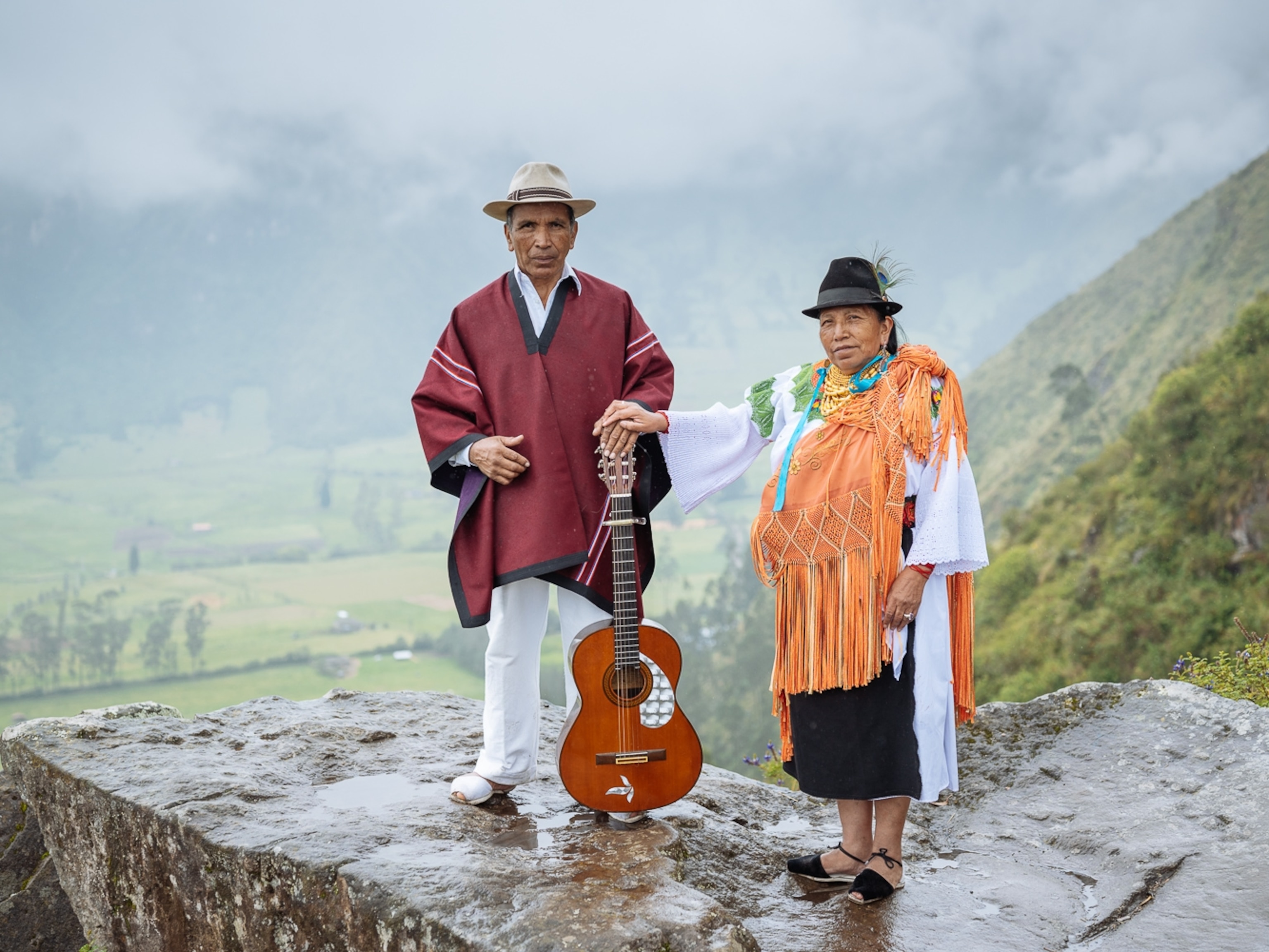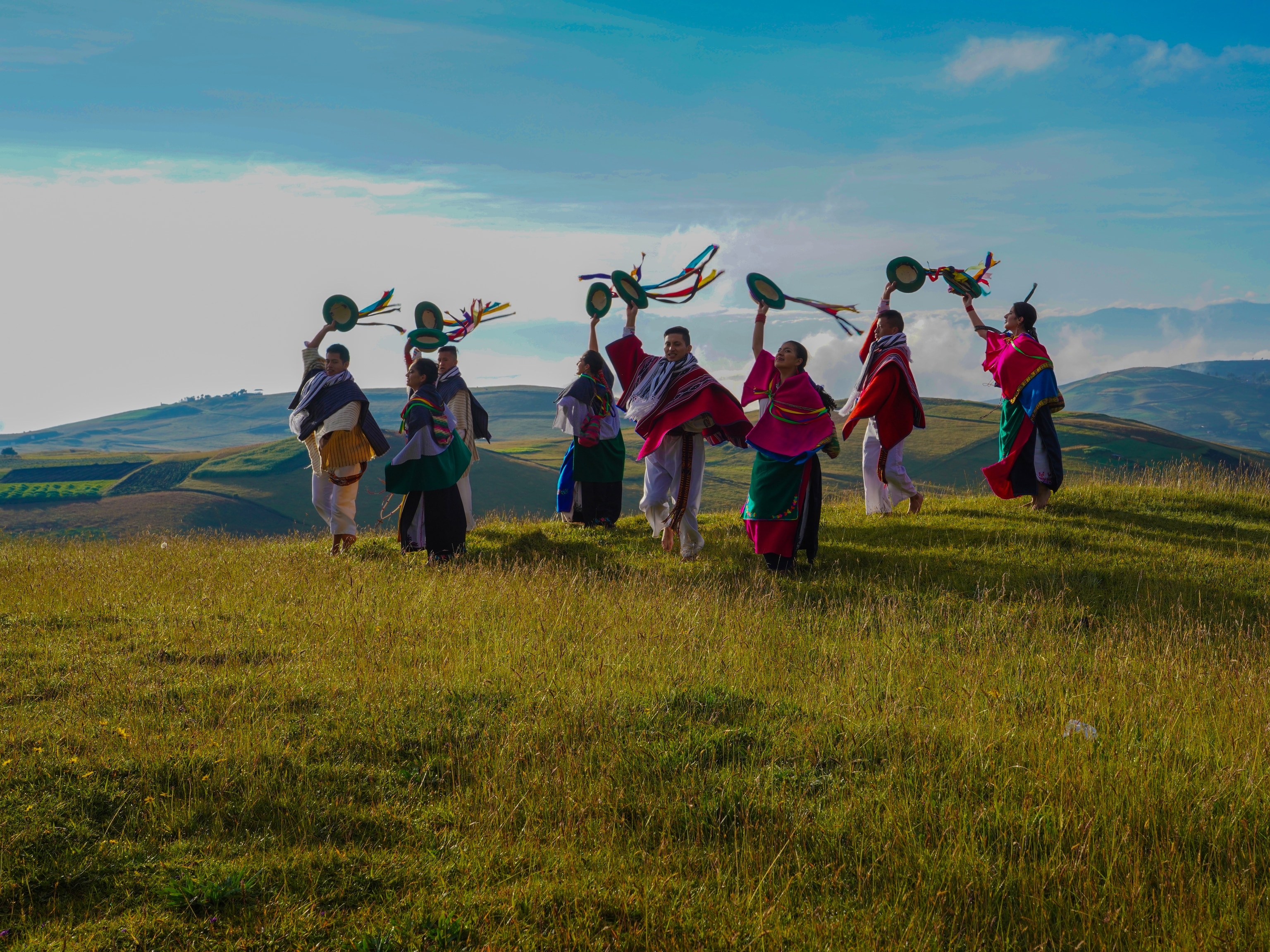
Notes from an author: David Haskell on the stirring sounds of Ecuador's rainforest
David George Haskell explores the sounds of the South American rainforest, a glorious tumult that reveals the hidden rhythms of life.
It’s late at night and I’m lying absolutely still. The hot air is so humid that sweat stings my eyes. All is dark. Cocooned behind insect netting in a cabin, I’m immersed in the forest’s sounds. The experience is so intense that sometimes tears of wonder fill my eyes, their salt merging with the night’s sweat.
Sixty thousand species of insect can live in 2.5 acres here in Ecuador’s eastern Amazon. Many of these species sing, creating a multi-layered chorus. In the lower registers, a katydid (bush cricket) gives fibrillating bursts. This is overlain with higher, shimmering songs, like dry rice cascading into a steel bowl. Alongside, a hacksaw-like sound delivers regular strokes, the harsh bite of teeth on metal. A sweet trill floats over. Other insects give continuous buzzes, quite close in pitch, one ringing clear and bright, another slightly fuzzy, and the third very arid, like a stick dragging through sand. Joining these creatures, a crested owl growls a sonorous oor. This is the deepest sound in the forest, delivered with the slowest tempo, a languorous bass. Tree frogs yelp from low vegetation, their call tight and nasal: yup, yup!
For these nocturnal species, sound is the primary means of social connection. Without it, mates could not find one another, flocks would become disoriented and parents would lose track of offspring. In the daytime, too, sound is the rainforest’s social glue. Foliage is so dense here; light so dim. Visual communication is hard or impossible.
Immersion in the sounds of the forest is radically unlike listening to human music. Whether in a folk song, jazz improvisation or symphony, the human mind crafts sonic layers, yet few people compose the music. Compared with the rainforest, human music emerges from a narrow generative source, the minds of composers and the proclivities of the human ear. In the rainforest, there is no single composer and no agreed-upon collection of tonal or melodic rules. Many species co-exist here, each expressing itself with a voice suited to the aesthetic of its own kind. The anarchic equality of evolution — a process with no central hierarchy — delivers sound that, to my ears, is joyful in its profusion, humbling me when I try to find its inner patterns. Listening here is a liberation from the tight control that we humans like to impose on the flow of sound.
The marvels of rainforest sound are both highly ordered and delightfully improvisational. Singing animals divide the acoustic spectrum to share sonic space and avoid overlapping with one another. They also shape their song to the space. Howler monkeys, for example, give very low rumbles to signal their territorial boundaries. These sounds travel well over long distances. The short-range squeaks and trills of pygmy marmosets are intended for nearby companions and are quickly swallowed by the reverberance of the forest. But evolution also gives us diverse extravagance. Sexual displays, especially, have taken very different paths of sonic evolution in different species, guided primarily not by physical laws of sound transmission but the aesthetic preferences of each species. For example, every one of the dozen species of tanager (a brilliantly coloured bird) has its own version of a whistled melody, signalling the pedigree and quality of singers.
In the forest, thousands of species unite, finding their places in the sonic tumult; a glorious and free convergence. Lying sleepless amid these sounds I’m humbled by the overwhelming sensory experience and inspired by the creative powers of evolution.
Should you visit one of the eco-lodges or research stations in the Tiputini region, exploring sounds with a local guide will deepen your sensory engagement and appreciation. The depth of cultural knowledge about the rainforest and its many singing animals is one of the great treasures of the Amazon. A distant chirp reveals that woolly monkeys are on their way. Raucous cries from above the canopy tell us that macaws and toucans are gathering in a fruiting tree. The buzz of a cicada signals that the dry season is waning. There is a lesson here for us, where-ever we live: by listening to birds, insects and other animals, we can understand the many rhythms of the seasons and connect to the lives of species that may be hidden from the eye but are marvellously vocal. In doing so, our senses open directly to the living Earth, a source of sustenance and renewal.
Sounds Wild and Broken: Sonic Marvels, Evolution’s Creativity, and the Crisis of Sensory Extinction by David George Haskell, is published by Faber & Faber, £20.
Published in the October issue of National Geographic Traveller (UK)
Follow us on social media
Twitter | Facebook | Instagram





